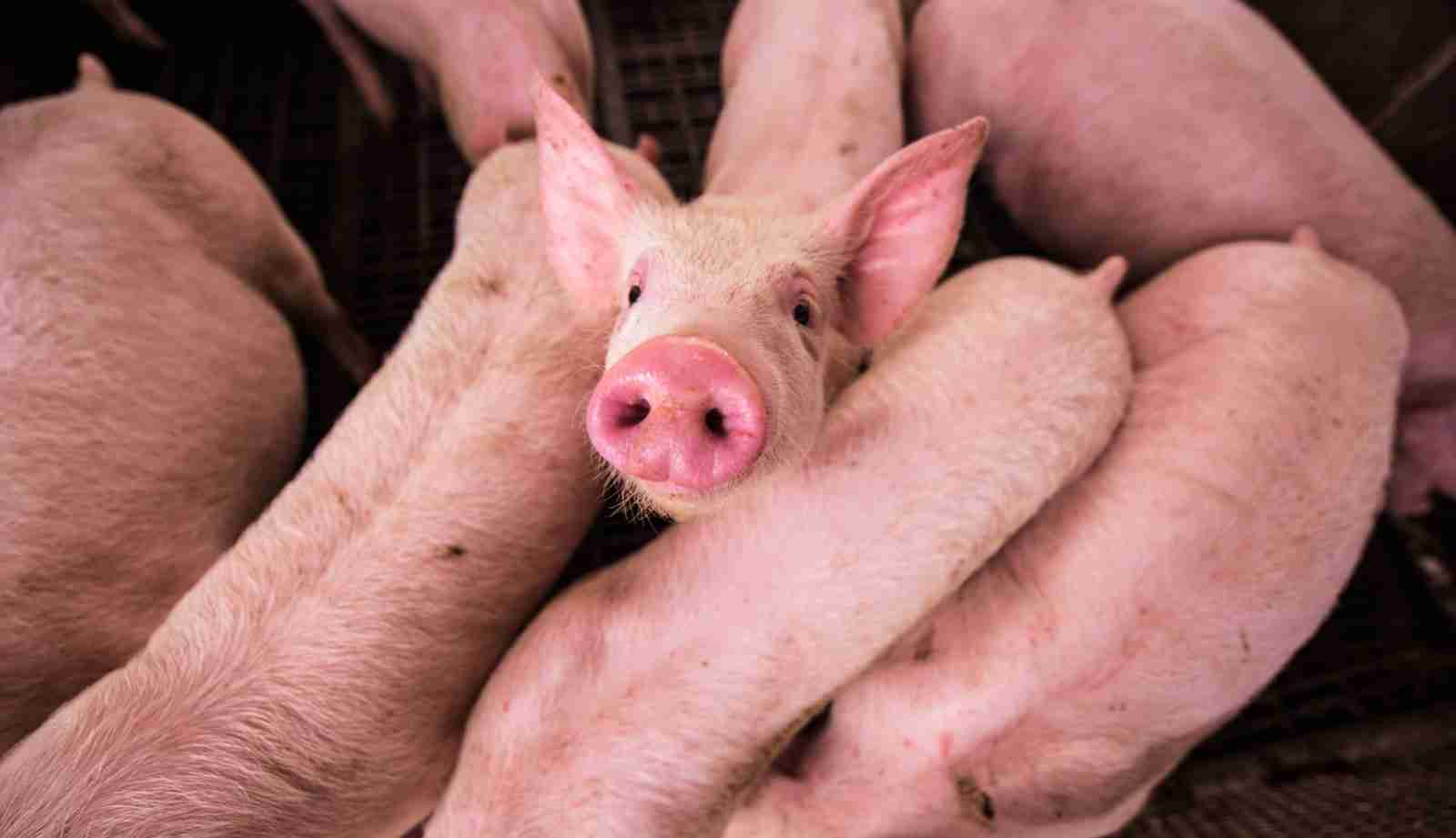24 Fun Facts About Pigs | Ready To Say Awww
1. Pigs are highly intelligent animals.
Pigs have remarkable cognitive abilities and can solve puzzles, learn tricks, and even play simple video games. Their intelligence is often compared to that of dogs or even primates.
This fact challenges the common misconception that pigs are unintelligent animals. It recognizes their capacity for learning and complex behaviors and offers a perfect place to introduce the idea of “pigs fun facts“.
2. Pigs have an excellent sense of smell.
A pig’s sense of smell is far more powerful than a human’s. They use their snouts to locate food underground, such as truffles, making them valuable in foraging.
This powerful sense also helps pigs navigate their surroundings and interact with other pigs through scent communication. It highlights the importance of olfaction in the pig’s world.
3. Pigs can run surprisingly fast.
While they might not look like sprinters, pigs can reach speeds of up to 11 miles per hour. This allows them to escape predators or cover ground quickly when needed.
This fact reminds us that appearances can be deceiving. It challenges the image of pigs as slow and lumbering animals.
4. Pigs love to play.
Pigs are playful animals that engage in activities like chasing, wrestling, and exploring objects. Play is crucial for their development and helps them learn and socialize.
This playful side adds a charming dimension to our understanding of pigs. It emphasizes their capacity for joy and enjoyment.
5. Pigs are highly social creatures.
Pigs live in complex social groups called sounders. They communicate through a variety of vocalizations and physical cues, forming strong bonds.
This social nature is essential for their well-being. It highlights how pigs, like humans, thrive in connection with others.
6. Pigs use mud as sunscreen and a way to cool down.
Wallowing in mud is a practical behavior for pigs. The mud protects their skin from sunburn and helps them regulate body temperature on hot days.
This fact demonstrates pigs’ resourceful use of their environment. It underscores how behaviors we might find strange have specific, beneficial purposes.
7. A pig’s squeal can be as loud as 115 decibels.
Pigs use their powerful squeals to communicate a wide range of emotions, from excitement to distress. That volume is comparable to a rock concert or a jet plane taking off.
This showcases the surprising intensity of pig communication. It emphasizes their ability to express themselves vocally.
8. Pigs have sweat glands, but they don’t sweat much.
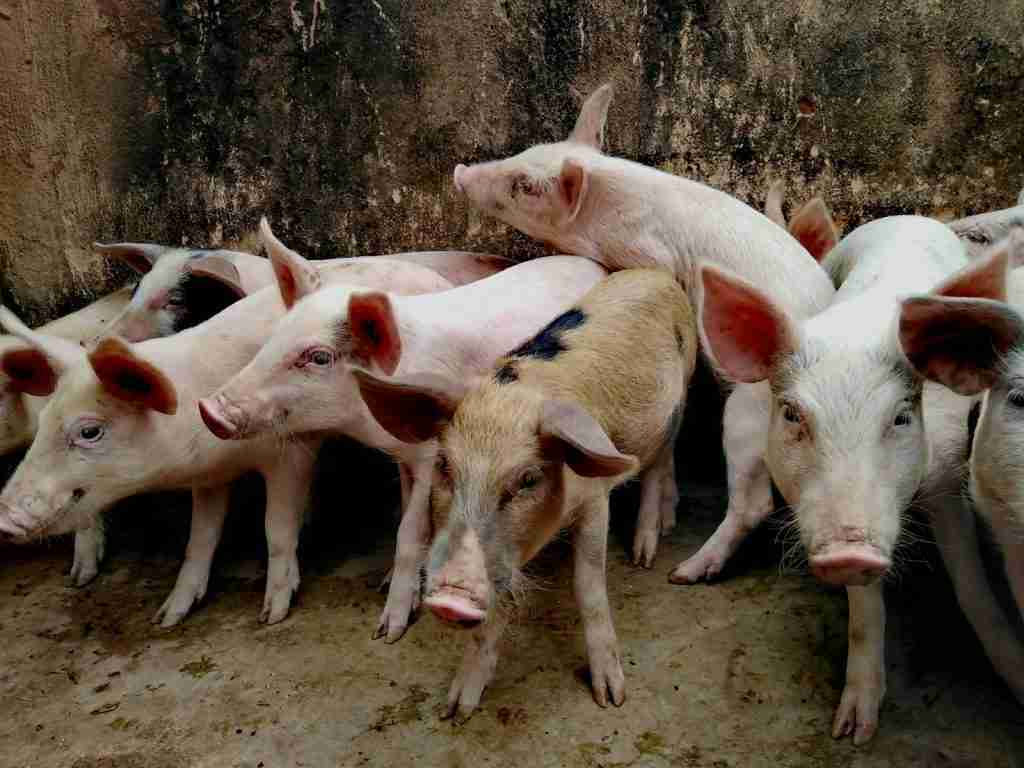
Unlike humans, pigs have a limited ability to sweat, which is a primary way of regulating body temperature. This is why they rely on behaviors like wallowing in mud to cool down.
This fact offers insight into the physiological differences between pigs and humans. It highlights how animals have evolved various adaptations to manage their body temperature.
9. Mother pigs sing to their piglets.
Sows communicate with their young piglets through soft grunts and hums. These vocalizations help soothe the piglets and create a bond between mother and offspring.
This gentle behavior reveals a nurturing side to pigs. It demonstrates the power of communication and care within animal families.
10. Pigs were domesticated around 9,000 years ago.
Pigs have a long history of living alongside humans as a food source and, more recently, as companions. This domestication has shaped their evolution and their relationship with humans.
This fact places pigs in a historical context. It highlights the enduring bond between humans and these intelligent animals and is a natural place to include facts about pigs.
11. Pigs can recognize their own names.
Research suggests that pigs are capable of learning and responding to their individual names. This ability indicates a level of self-awareness and cognitive capacity.
This further challenges the notion of pigs as unintelligent creatures. It demonstrates their ability to form associations and respond to specific stimuli.
12. Pigs dream, just like humans.
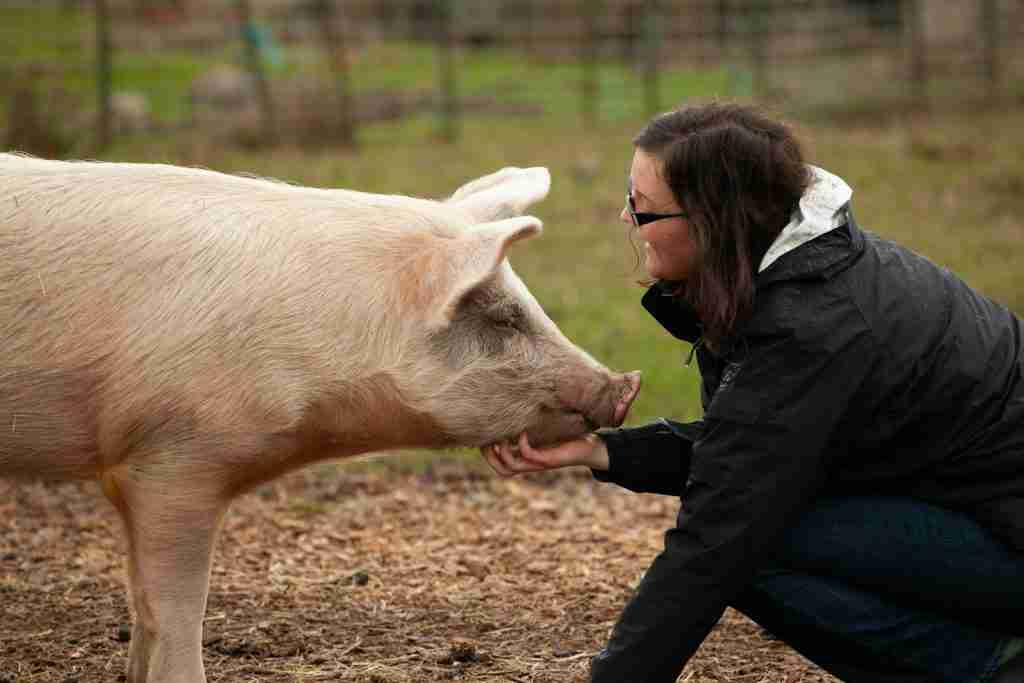
Scientists believe that pigs experience REM (Rapid Eye Movement) sleep, the stage associated with dreaming. While we can’t know for sure what they dream about, this finding hints at the inner lives of pigs.
This fact adds a touch of mystery and intrigue to our understanding of pigs. It raises questions about animal consciousness and the potential similarities between their experiences and our own.
13. Pigs are omnivores with a voracious appetite.
Pigs will eat just about anything, including fruits, vegetables, grains, roots, and even small animals. This diverse diet helps them adapt to a variety of environments.
Their non-picky eating habits contribute to their image as messy eaters. However, this adaptability has played a role in their evolutionary success.
14. Pigs have a complex sense of direction.
Pigs have been shown to find their way back home, even over long distances. Researchers are still exploring the mechanisms behind this uncanny navigational ability.
This hidden talent hints at a sophisticated understanding of their environment. It adds to the growing body of evidence showcasing pig intelligence.
15. Pigs can learn tricks like dogs.
Thanks to their high intelligence, pigs can be trained to perform tricks like sitting, fetching, and spinning. This trainability makes them engaging and rewarding companions.
This fact underscores their cognitive abilities. It suggests a potential for pig training that rivals our more common associations with dog training.
16. Some pigs are excellent swimmers.
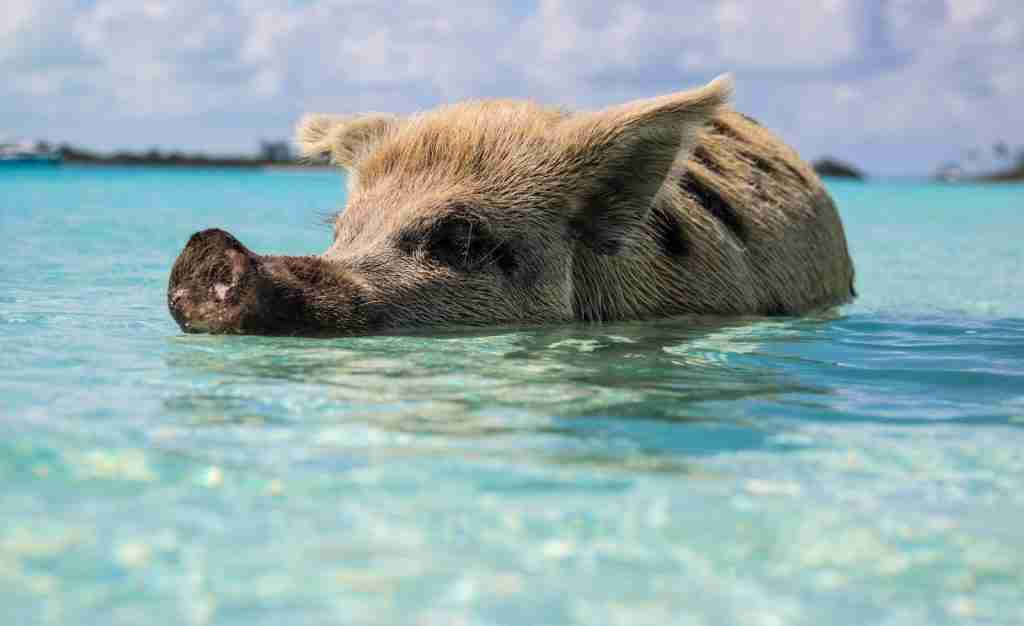
Certain breeds of pigs are surprisingly adept at swimming. There’s even an island in the Bahamas populated by swimming feral pigs!
This aquatic ability demonstrates their adaptability and potential for unexpected skills. It challenges the preconceived notions about pigs being confined to land.
17. Wild boars are the ancestors of domestic pigs.
Domestic pigs descended from wild boars, which are native to parts of Europe, Asia, and Africa. The process of domestication began thousands of years ago.
This connection to wild boars highlights the pig’s evolutionary history. It’s a reminder of their origins and the changes brought about by domestication.
18. Pigs are kept as pets, just like cats and dogs.
Pigs intelligence, social nature, and trainability make them enjoyable companion animals. Potbellied pigs, in particular, have gained popularity as house pets.
This trend challenges the traditional view of pigs solely as livestock. It highlights their potential for close bonds with humans.
19. Pigs communicate through a variety of grunts, squeals, and snorts.
Pigs have a rich vocal repertoire, with different sounds signifying various emotions or needs. Piglets even have unique calls that their mother recognizes.
This complex communication system demonstrates their social intelligence. It emphasizes how pigs connect with and understand each other.
20. Pigs are naturally clean animals.
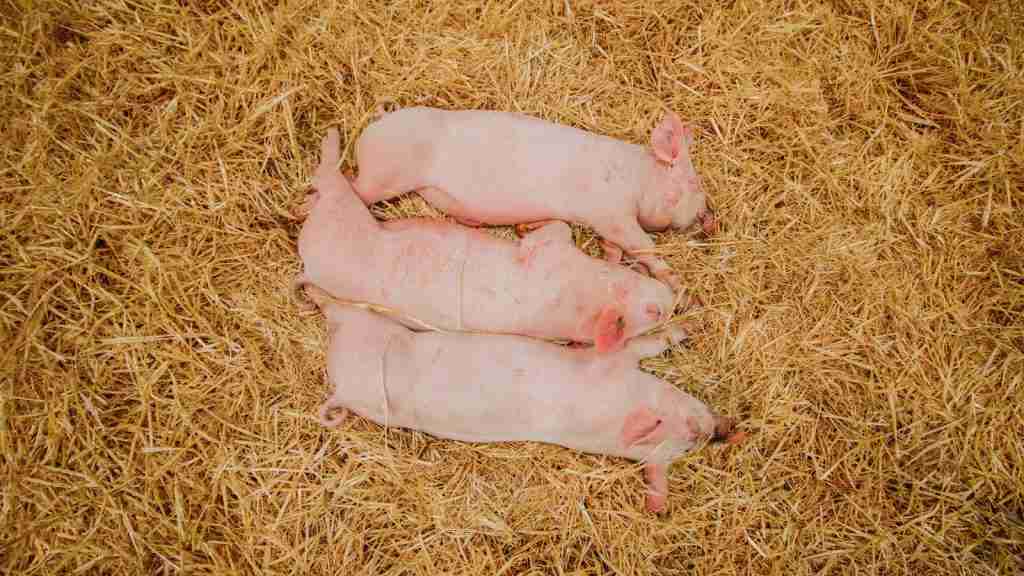
Contrary to their reputation, pigs prefer to keep themselves clean. They will designate specific areas for waste away from their eating and sleeping spaces.
This instinct for cleanliness is often obscured when pigs are kept in confined conditions. The association with mud is primarily due to its practical uses for pigs.
21. A full-grown pig can weigh over 700 pounds.
While some breeds remain smaller, many domestic pigs can grow to impressive sizes. The largest pig on record reportedly weighed over 3,000 pounds!
This fact reminds us of the sheer physical size some pigs can reach. It highlights the vast range of pig breeds and their diverse characteristics.
22. Pigs use tools in their natural environment.
Wild pigs, especially warthogs, have been observed using sticks and stones to dig or access food. This behavior demonstrates problem-solving skills and adaptability within their environment.
Tool use showcases an advanced level of cognitive ability. It further challenges the perception of pigs as unintelligent creatures and offers interesting pigs facts.
23. Pigs experience a range of emotions.
Research suggests that pigs can feel happiness, sadness, fear, and even empathy. Their emotional complexity is comparable to many domesticated animals.
This understanding adds depth to our understanding of pigs as sentient beings. It encourages empathy and ethical consideration in our treatment of them.
24. The phrase “when pigs fly” signifies something impossible.
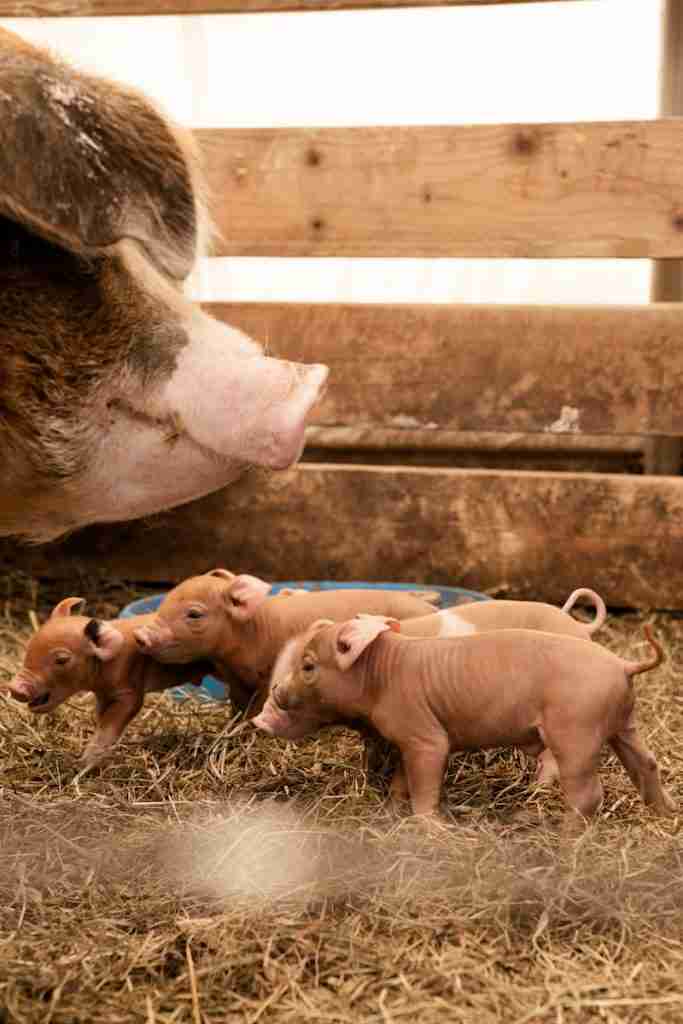
This common saying highlights the perceived impossibility of pigs achieving flight. It’s a lighthearted expression rooted in the biological limitations of pigs.
This metaphorical use of pigs in language reflects their familiar presence in our cultural understanding. It demonstrates how pigs have permeated beyond their physical existence and into our idioms.
FAQs
In the wild, pigs typically have a lifespan of 4-8 years. Domestic pigs can live up to 15-20 years with proper care.
Piglets are born with a keen sense of touch and can recognize their mothers’ voices soon after birth. They are born with a set of needle-sharp teeth that help them nurse, and they grow rapidly, gaining several pounds in their first weeks. Their playful nature and inquisitive behavior make them endearing creatures to those who care for them.
Pig farms, also known as hog farms, are places where pigs are raised for meat production. These farms provide a controlled environment where pigs have access to food, water, shelter, and veterinary care
Pigs are remarkably social and affectionate animals, often forming close bonds with each other and even with humans. They are highly adaptable creatures, with a keen sense of smell that helps them root out food underground.
Pig size varies greatly depending on breed. Pet pigs can be as small as 50 pounds, while large farm pigs can exceed 1,000 pounds.

